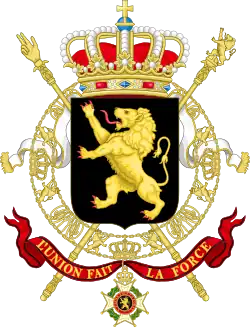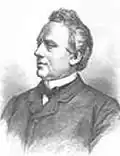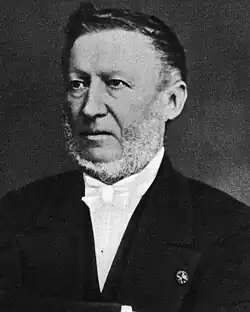1882 Belgian general election
| ||||||||||||||||||||||||||||||||||
69 of the 138 seats in the Chamber of Representatives 70 seats needed for a majority | ||||||||||||||||||||||||||||||||||
|---|---|---|---|---|---|---|---|---|---|---|---|---|---|---|---|---|---|---|---|---|---|---|---|---|---|---|---|---|---|---|---|---|---|---|
| ||||||||||||||||||||||||||||||||||
| ||||||||||||||||||||||||||||||||||
 |
|---|
|
|
Partial general elections were held in Belgium on 13 June 1882.[1][2] The result was a victory for the Liberal Party, which won 79 of the 138 seats in the Chamber of Representatives and 37 of the 69 seats in the Senate.[2] Voter turnout was 75.1%, although only 55,517 people were eligible to vote.
Under the alternating system, elections for the Chamber of Representatives were only held in four out of the nine provinces: Hainaut, Limburg, Liège and East Flanders. Special elections were also held in the arrondissements of Antwerp, Philippeville, Brussels, Nivelles and Namur.
Run-off elections were held a week later, on 20 June 1882.
A special election was also held in Liège on 16 October 1882 following the death of Dieudonné Mouton on 17 September.
Results
Chamber of Representatives
 | ||||||||
|---|---|---|---|---|---|---|---|---|
| Party | Votes | % | Seats | |||||
| Won | Total | +/– | ||||||
| Liberal Party | 22,001 | 52.77 | 49 | 79 | +5 | |||
| Catholic Party | 19,681 | 47.21 | 20 | 59 | +1 | |||
| Others | 7 | 0.02 | 0 | 0 | 0 | |||
| Total | 41,689 | 100.00 | 69 | 138 | +6 | |||
| Total votes | 41,689 | – | ||||||
| Registered voters/turnout | 55,517 | 75.09 | ||||||
| Source: Mackie & Rose,[3] Sternberger et al. | ||||||||
Senate
 | ||
|---|---|---|
| Party | Seats | |
| Liberal Party | 37 | |
| Catholic Party | 32 | |
| Total | 69 | |
| Source: Sternberger et al. | ||
Constituencies
The distribution of seats among the electoral districts was as follows for the Chamber of Representatives, with the difference compared to the previous election due to population growth:[4]
| Province | Arrondissement | Seats | Change |
|---|---|---|---|
| Antwerp | Antwerp | 8 | +1 |
| Mechelen | 3 | – | |
| Turnhout | 3 | – | |
| Limburg | Hasselt | 2 | – |
| Maaseik | 1 | – | |
| Tongeren | 2 | – | |
| East Flanders | Aalst | 4 | +1 |
| Oudenaarde | 3 | – | |
| Gent | 8 | – | |
| Eeklo | 1 | – | |
| Dendermonde | 3 | – | |
| Sint-Niklaas | 3 | – | |
| West Flanders | Bruges | 3 | – |
| Roeselare | 2 | – | |
| Tielt | 2 | – | |
| Kortrijk | 4 | – | |
| Ypres | 3 | – | |
| Veurne | 1 | – | |
| Diksmuide | 1 | – | |
| Ostend | 1 | – | |
| Brabant | Leuven | 5 | – |
| Brussels | 16 | +2 | |
| Nivelles | 4 | – | |
| Hainaut | Tournai | 4 | – |
| Ath | 2 | – | |
| Charleroi | 7 | – | |
| Thuin | 3 | – | |
| Mons | 6 | +1 | |
| Soignies | 3 | – | |
| Liège | Huy | 2 | – |
| Waremme | 2 | – | |
| Liège | 9 | +1 | |
| Verviers | 4 | – | |
| Luxembourg | Arlon | 1 | – |
| Marche | 1 | – | |
| Bastogne | 1 | – | |
| Neufchâteau | 1 | – | |
| Virton | 1 | – | |
| Namur | Namur | 4 | – |
| Dinant | 2 | – | |
| Philippeville | 2 | – | |
| 138 | +6 |
References
- ^ Codebook Constituency-level Elections Archive, 2003
- ^ a b Sternberger, D, Vogel, B & Nohlen, D (1969) Die Wahl der Parlamente: Band I: Europa - Erster Halbband, p105
- ^ Thomas T. Mackie & Richard Rose (1991) The International Almanac of Electoral History, Macmillan, pp48–49
- ^ List of members of the Chamber of Representatives (1882-1883)

